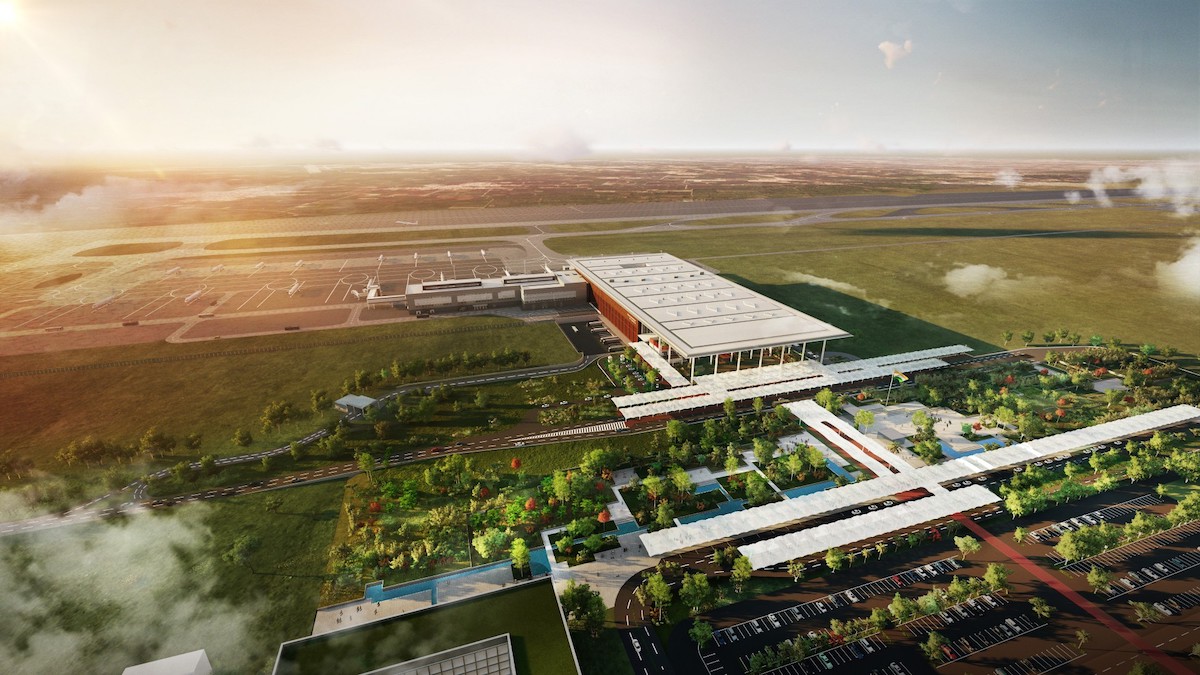
The future Noida International Airport, expected to be India's largest when completed, aims to be a zero-carbon-emission facility, setting a new standard for sustainable airport operations. To achieve this, the developers are relying on technology from Swiss start-up Nanogence.
Construction work is currently in full swing at the greenfield site, some 75 km off Delhi, for the first phase of the airport, expected to be completed by the end of next year. To keep this mega-project environmentally friendly, the developers of the new airport are using a breakthrough technology from Nanogence Catalysts, which are patented smart activators that enhance the binding efficiency of cementitious material, providing high material performance while incorporating eco-friendly substitutes and reducing production costs. "A state-of-the-art tailor-made catalyst is being used in construction work for the Noida airport. This technology allows for direct reduction or replacement of up to 20 per cent of cement requirement," a project official says.
"This has led to a significant drop in carbon emissions at the airport site as well as improved the project's cost efficiency, since one of the biggest capex in building large infrastructure projects is the usage of high amounts of concrete, contributed by the cement demand. Moreover, cement is one of the largest contributors to the embodied carbon footprint of infrastructure projects," the official adds.
Noida International Airport's CEO Christoph Schnellmann says there is excitement around the potential of this technology which would help them meet their sustainability goals. "This technology dovetails our ambitions very well to keep our focus squarely on the environmental impact due to the airport's construction and its operations. Adding: "Literally from day one, we have set the bar high for ourselves and fixed a goal to operate the airport with net zero emissions".
Weather-proofing through deeptech innovation
Senior employees of Tata Projects, the engineering, procurement and construction (EPC) partner for the airport, says the airport management's resolve to check carbon footprint has encouraged them to implement the Nanogence technology in this project. "Control trials have been conducted to understand the material's performance through regular tests to examine compressive strength and slump retention. Concrete packing at nano level helps in the long-term weather resistance and corrosion resistance of the concrete structure," adds Ravishankar Chandrasekaran, executive vice president at Tata Projects, told PTI.
"Implementation of Nanogence will help in weather-proofing and corrosion resistance. Due to the use of nanoparticles, the binding of concrete is superior and the structure will have a longer life. The admixture has helped in reducing the consumption of OPC (ordinary portland cement), therefore controlling the carbon footprint due to concrete usage," he explained. Asked about the initial investment in the technology, long-term cost savings and benefits at the airport, Chandrasekaran adds that Tata Projects has only started with the trials on Nanogence.
Speaking of its technology, Abhishek Kumar, the CEO and founder of Nanogence, says the catalyst allows "optimization of the cementitious content in the concrete" by either reducing its demand or replacement with eco-friendly materials in the concrete while preserving its strength and quality. He explains: "Cement's contribution to the carbon footprint of infrastructure projects and its cost in concrete is the highest; the Nanogence catalyst reduces both - carbon emissions and cost,"
Reducing emissions and costs
On estimates of reduction in emissions through the catalyst, Kumar says in the Indian market, builders are looking for ways to 20 per cent less cement directly or replace it with other materials. Additionally, the use of certain additives can be eliminated in the admixture, therefore saving cost and resources while maintaining the quality of the construction. The carbon emission was reduced up to 30-60 per cent when compared to only OPC mix design concrete and 20-40 per cent on blended cement mix design, he said.
Kumar adds that compared to traditional construction techniques, Nanogence engages in a novel method for enhancing the binding strength of concrete products thus lowering the requirement of carbon-heavy cement in concrete production. The Nanogence founder notes that the vast availability of eco-friendly materials such as waste products like fly ash and slag which end up in water streams or landfills but can now be integrated for construction work, allowing greater replacement of such materials in the concrete with high performance.
For the Noida International Airport, using Nanogence catalyst, Tata Projects can reduce operational costs coming from cement usage while a further reduction is achieved through lower logistics and energy demand.
(PR - ES)























































Please login or sign up to comment.
Commenting guidelines